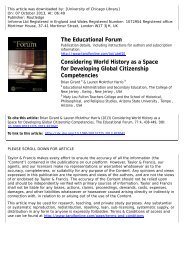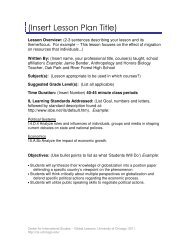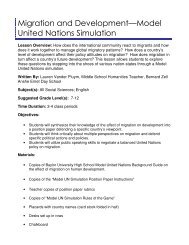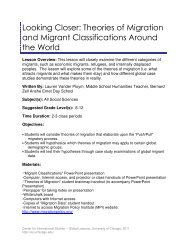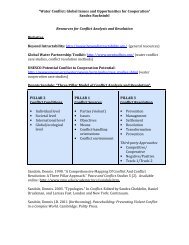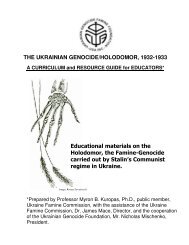David Archer - University of Chicago
David Archer - University of Chicago
David Archer - University of Chicago
You also want an ePaper? Increase the reach of your titles
YUMPU automatically turns print PDFs into web optimized ePapers that Google loves.
successful, would curtail emissions by about 6% below 1990 levels, while carbon cycle<br />
models show that eventual cuts <strong>of</strong> order 50% would be required to truly stabilize the CO 2<br />
concentration <strong>of</strong> the atmosphere.<br />
Carbon emissions could be lessened quite a bit by conservation and efficiency.<br />
Sources <strong>of</strong> carbon-free energy such as windmills and solar energy exist and are rapidly<br />
being scaled up. A forecast <strong>of</strong> the amount <strong>of</strong> energy civilization will require in the<br />
coming century suggests that large, new sources <strong>of</strong> energy may be required in the future.<br />
Nuclear energy is essentially carbon-free but it would take a new nuclear power plant <strong>of</strong><br />
current design built every other day for the next 100 years to keep up with forecast<br />
energy demand. New ideas include solar cells on the moon, beaming energy back to<br />
Earth as microwave radiation, or high-altitude windmills, mounted on kites tethered in<br />
the jet stream.<br />
With our growing technological and intellectual prowess, as well as our exploding<br />
population, we are slowly taking over the job <strong>of</strong> managing the biosphere. May we do it<br />
wisely!<br />
Chapter 1 12/18/05 6



